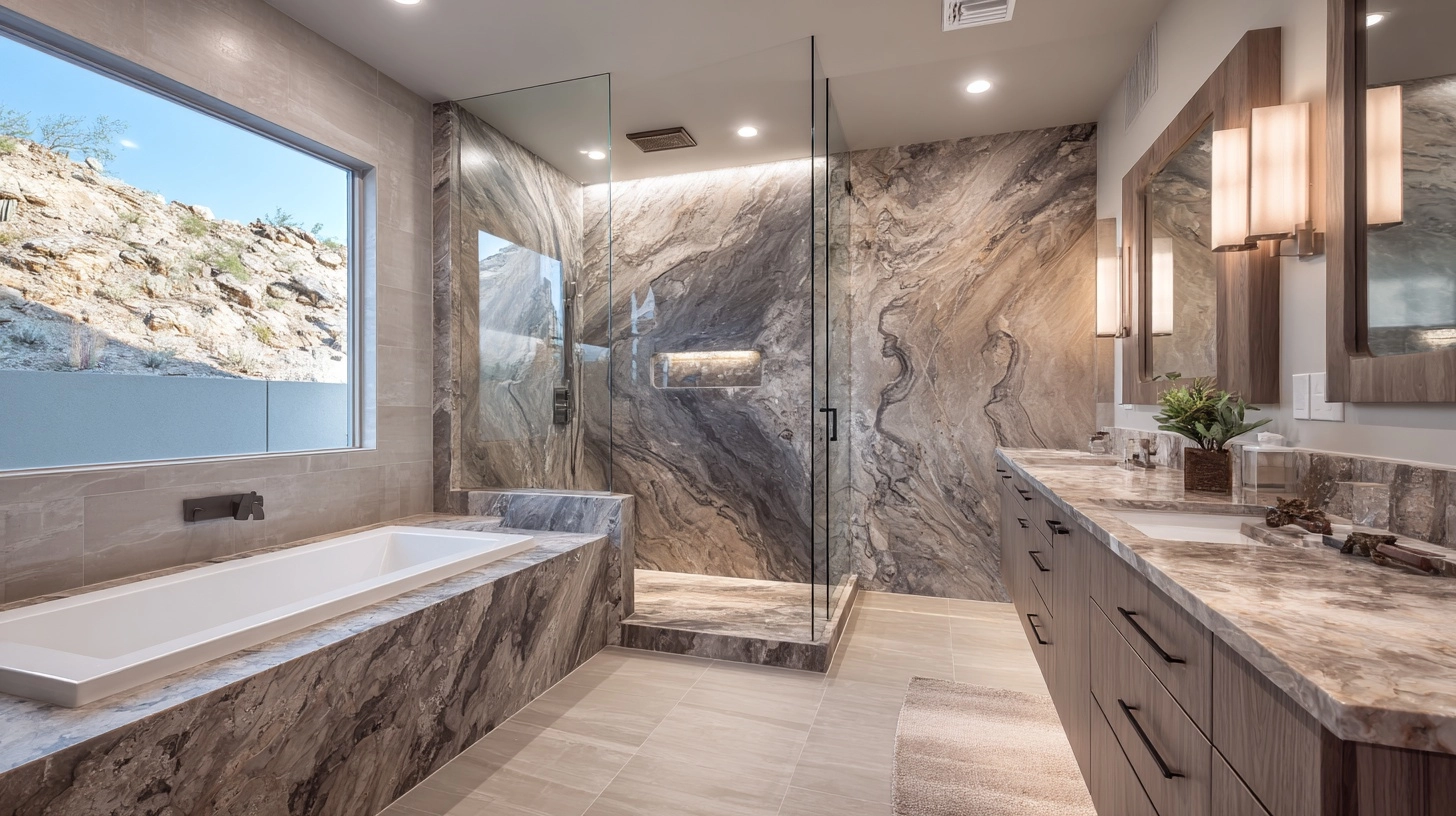
Large-Format Porcelain Slabs: Smart Uses in AZ Homes

Hidden Work Kitchens: Sculleries That Keep Mess Away

The prospect of selling a home often sparks a familiar debate: should you invest in renovations before listing, or sell “as is” to avoid additional outlay? While the right answer hinges on nuances like market conditions, buyer expectations, and your property’s current state, a thoughtful renovation strategy can yield significant returns. Today’s real estate market demands more than blanket approaches—it calls for precision, driven by local insights and objective financial analysis. This article explores not only when to renovate before a sale, but also what renovations consistently offer the highest leverage according to historical data and emerging trends.
One of the most critical steps before diving into pre-listing renovations is to understand the market context in your region. In high-demand, low-inventory conditions, homes often sell quickly, and buyers may be willing to overlook minor cosmetic flaws. Conversely, in a buyer’s market—or when marketing premium properties—condition becomes paramount, and strategic updates can differentiate your listing.
To make a data-driven decision, analyze recent sales of comparable properties (known as “comps”). Look for homes that have sold with and without renovations and measure the impact on days on market and final sale price. Equally important, factor in your own time horizon and liquidity needs. If a swift sale is essential, focus on minimal, high-impact updates. If maximizing price is your priority and time is less of a concern, a more comprehensive approach may be justified. In both scenarios, an unbiased financial evaluation—often aided by consultation with an appraiser or real estate professional—provides a critical foundation.
Moreover, consider seasonal timing. Renovations that enhance curb appeal, like landscaping or exterior painting, are best scheduled ahead of peak listing months. This bicultural perspective is particularly relevant in markets with diverse buyer bases, such as areas with strong Asian-American communities, where specific aesthetics or functional expectations may drive decision-making. Align your renovation schedule not only with market cycles, but also with cultural and regional norms that influence buyer preference.
Not all renovations are created equal, and data consistently shows that certain updates deliver better returns on investment (ROI) than others. According to the National Association of Realtors' Remodeling Impact Report, buyers are most influenced by kitchens, bathrooms, and essential systems like HVAC. For example, a minor kitchen remodel—updating cabinet fronts, replacing cookware, and swapping outdated appliances—often recoups 70–80% of its cost, while full-scale luxury remodels rarely match this efficiency.
Bathrooms also play a pivotal role. Upgrading fixtures, installing new lighting, and refreshing grout or cabinetry give the sense of a well-maintained space. Yet, major overhauls can overshoot the mark, especially if they disrupt the overall design harmony of the home or exceed neighborhood standards. Beyond kitchens and baths, don’t underestimate the impact of basic repairs. Addressing deferred maintenance items—like roof leaks, worn flooring, or inefficient windows—improves inspection outcomes and can accelerate the closing process.
In many communities, especially those with multi-generational households common among Asian-American buyers, functional updates such as adding a second ensuite or improving accessibility can be particularly attractive. Always weigh the projected ROI against the initial outlay and the property’s price band; in luxury markets, finishes may matter more, while in starter homes, practicality reigns.
First impressions are forged in less than seven seconds, and the exterior of a property sets the tone for every viewing that follows. Simple changes—fresh paint, updated lighting, manicured landscaping—create instant visual appeal and instill buyer confidence. Studies indicate that homes with strong curb appeal sell an average of 7% more than otherwise comparable listings.
For a data-driven approach, focus on “visible value” versus “hidden value.” For example, clean walkways, newly mulched beds, and modern house numbers offer immediate returns on minimal investment. Contrast this with replacing all fencing or installing elaborate water features, which rarely translate proportional value at sale time. Consider regional factors: drought-resistant landscaping is a premium in California markets, while lush, traditional gardens may signal prestige in the Midwest.
Don’t neglect the front entryway, either. Replacing a worn front door—with a modern steel or fiberglass model—regularly ranks among the highest ROI improvements nationally. Similarly, repairing cracked driveways or paths sends a silent but powerful message: this home is well cared-for, from the outside in. For sellers positioned in diverse or multicultural neighborhoods, consider subtle design choices that resonate across various buyer demographics without limiting appeal.
Pre-listing renovations can be transformative, but not every update is prudent. The risk of over-improvement—investing more than the market will reward—remains an ever-present concern, particularly in homogenous subdivisions with tight price ceilings. Key warning signs include contemplating luxury upgrades in entry-level neighborhoods, unique or highly personalized changes, or additions that significantly alter the property structure in markets averse to such shifts.
A meticulous, analytical review of completed comps in your area is essential. Look for ceiling prices and avoid exceeding them with costly upgrades. Financial prudence dictates that sellers avoid trends that may age poorly, such as highly stylized backsplashes or specialized room conversions with limited use appeal. Remember, the aim isn’t to create your dream home, but to present a functional, attractive, and market-appropriate property.
In some situations, the “as is” route makes sense—particularly with homes that require extensive repairs or when market momentum favors rapid transactions. Here, a price reduction can create competitive tension among buyers, especially investors or renovators willing to assume the update burden for future gain. The key is transparency; disclose any known issues upfront, and price the property to reflect its current condition while avoiding legal pitfalls.
Having determined which updates offer the most leverage, execution becomes paramount. Start with a comprehensive budget that accounts for both direct renovation costs and ancillary expenses, such as permits, staging, and potential storage or temporary housing needs. Build in contingencies for overruns—historical data suggests that even well-planned projects exceed baseline estimates by 10–15%.
Select reputable, licensed professionals for all major work, not only to safeguard quality but to ensure code compliance and limit liability during the sale. Schedule renovations to limit market downtime, and coordinate with your listing agent to sequence marketing efforts accordingly—well-timed “coming soon” campaigns can generate anticipation while work wraps up. For those with tight timeframes or limited renovation experience, project managers or concierge services can streamline the process and mitigate risks.
Finally, document all improvements. Detailed records not only reassure buyers about quality and timelines, but also support appraisals and, where applicable, future insurance claims. Use before-and-after visuals in marketing materials to demonstrate value. Remember, the end goal is a seamless transaction with optimal financial outcome—and a property that stands out for all the right reasons.
In today’s nuanced real estate environment, the power of pre-listing renovations is undeniable. With a methodical, data-driven approach, sellers can maximize their home’s potential, appeal to diverse buyer pools, and achieve a superior return on investment—proving that preparation, indeed, pays.
Disclaimer: The content provided in this article is for informational purposes only and is not intended as financial, tax, or investment advice. JL Coates is not a financial advisor, tax consultant, or investment specialist. We recommend consulting with a professional financial advisor, tax specialist, or investment advisor to discuss your specific circumstances before making any financial, tax, or investment decisions based on this information. JL Coates assumes no responsibility for any actions taken based on the information provided in this article.



